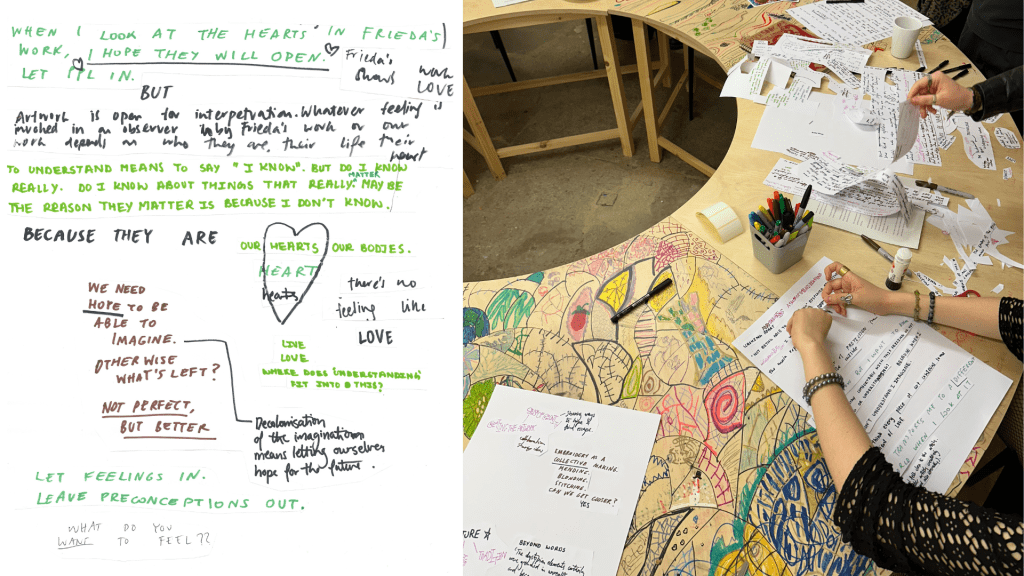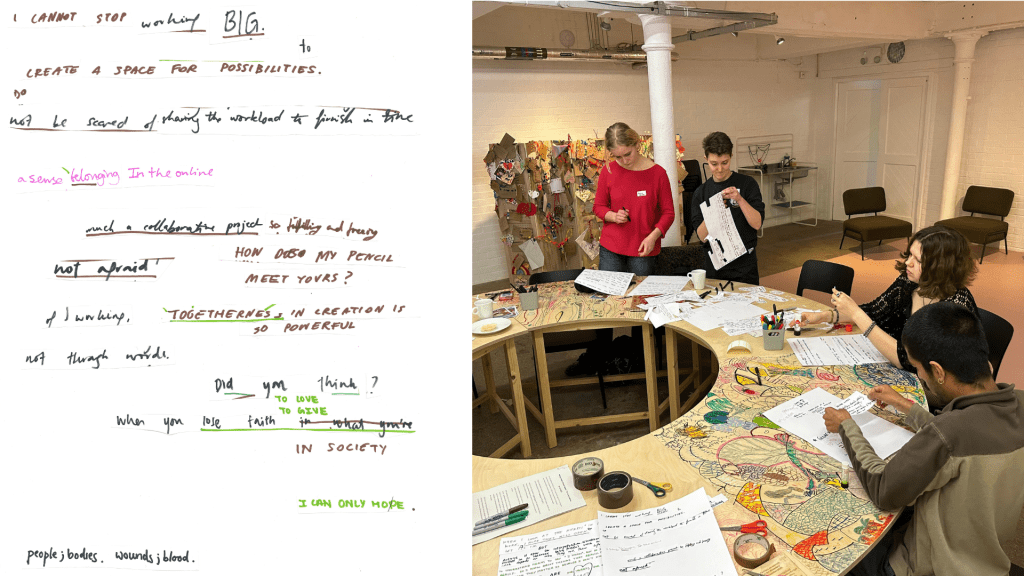Each year, Modern Art Oxford invites 8 Young Creatives aged 16-19 to bring new perspectives to our programme.
This year, the group created a collective artwork titled Possible Futures which responds to the themes and materials in Frieda Toranzo Jaeger: A future in the light of darkness. The artwork is displayed in the Creative Space throughout the exhibition. They have collected some questions for those who see their artwork, in real life or online.
Possible Futures

Answer these questions about the Young Creatives artwork:
- Where do you see yourself in this artwork?
- Do you feel part of it, or outside of it?
- Does it feel cosy, or threatening / oppressive?
- Which part of the artwork resonates the most with how you see the future?
- How does the artwork influence the way you see the future?
- How could this artwork inspire your own work?
- What are the elements of reality in the painting, and which ones are more dystopian or utopian?
- Are we living in a dystopia or an utopia?
- What do you think the heart represents? And what about the spikes around it?
- In what ways do you think this artwork reflects or challenges Frieda?
- Do you think the spread of technology is a good or a bad thing?
- What do you think would be in the artwork gaps and behind it, where there is a wall? What do you think there is behind the doors?
- What do you think the strings represent?
- In which ways does this work differ and respond to Frieda’s work?
- How can this work relate to your own life?
- What is your favourite part of the work?
Collective writing:




Have your answers changed after reading our poetic response?
You can visit Frieda Toranzo Jaeger: A future in the light of darkness until 26 May 2024.
